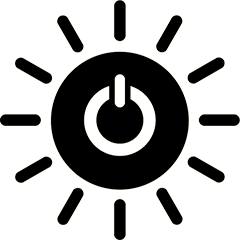The PowerCone from Biome Renewables channels incoming wind onto turbine blades to address root leakage and save energy.
Benefits
- Increased power
- Reduced noise
- Reduced loads
Applications
- Renewable energy
- Wind turbines
UN Sustainable Development Goals Addressed
-

Goal 7: Affordable & Clean Energy
The Challenge
Root leakage is a problem that occurs at the center of wind turbines. Around the hub, an area of low pressure develops and no power is produced. This is in contrast to the high-pressure area around the rest of the blades, which creates a pressure differential. This sucks additional power away from the blades and creates unnecessary turbulence.
Innovation Details
The PowerCone® is a retrofit for wind turbines that works by channelling incoming wind onto the blades to address root leakage, while directing more flow to outer parts of the turbine. The PowerCone attaches directly to the hub of a wind turbine and co-rotates with the rotor, helping it to capture more of the wind that’s already blowing. It redistributes wind to enhance the performance of existing turbines, lowering cut-in speeds, increasing torque and ultimately making the turbine more effective and efficient. It does this because the PowerCone mimics the coning angle of the maple seed. The coning angle is the angle at which a maple seed falls as it moves through the air, following the path of least resistance. The PowerCone also mimics a kingfisher beak, which allows the bird to dive into the water while barely making a splash. This is due to the way the bird pushes fluid around its beak as it enters the water. The PowerCone draws on these principles, directing wind from the root to outer spans of the blade and channeling it smoothly onto its surface. The PowerCone can be fitted to 98% of all installed turbines around the world. In tests, it was shown to increase Annual Energy Production (AEP) by 10-13%.
Biological Model
As a maple seed falls to the ground, it moves through the air with a pattern of least resistance, following its coning angle. This allows the maple seed to deal with turbulent air by interacting with the flow over a longer time-span.
The kingfisher is a bird that dives into water to catch its prey. It has a long, narrow pointed beak that allows it to enter the water while barely making a splash. The beak steadily increases in diameter from the tip to the head, which helps reduce impact when the bird hits the water.






